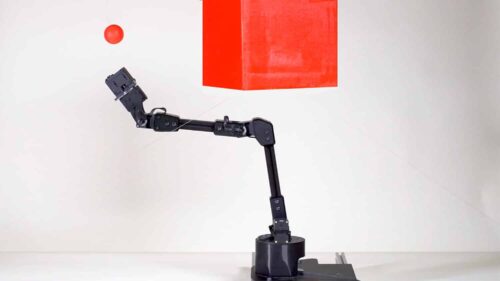A robot created by Columbia Engineers learns to understand itself rather than the environment around it.
A team of researchers at Columbia Engineering have developed a robot that, for the first time, can learn a model of its whole body from scratch without any human aid. In a paper published in Science Robotics, researchers explain how the robot built a kinematic model of itself. The robot utilizes that model to plan movements, accomplish objectives, and avoid obstacles in a range of scenarios. Even damage to its body was automatically detected and corrected.

The robotic arm was placed within a circle of five streaming video cameras. The robot explores itself through the cameras, the robot wiggled and contorted to learn how exactly its body moved in response to various motor commands. In around three hours the internal deep neural network had finished learning the relationship between the robot’s motor actions and the volume it occupied in its environment.
“We were really curious to see how the robot imagined itself,” said Hod Lipson, professor of mechanical engineering and director of Columbia’s Creative Machines Lab, where the work was done. “But you can’t just peek into a neural network, it’s a black box.” After the researchers struggled with various visualization techniques, the self-image gradually emerged. “It was a sort of gently flickering cloud that appeared to engulf the robot’s three-dimensional body,” said Lipson. “As the robot moved, the flickering cloud gently followed it.” The robot’s self-model was accurate to about 1% of its workspace.
It is considered that the ability of robots to model themselves without being assisted by engineers is important. This is because not only does it save labor, but it also allows the robot to keep up with its own wear-and-tear, and even detect and compensate for damage.
“Self-modeling is a primitive form of self-awareness,” said professor Lipson. “If a robot, animal, or human, has an accurate self-model, it can function better in the world, it can make better decisions, and it has an evolutionary advantage.”








